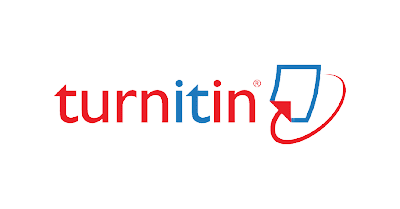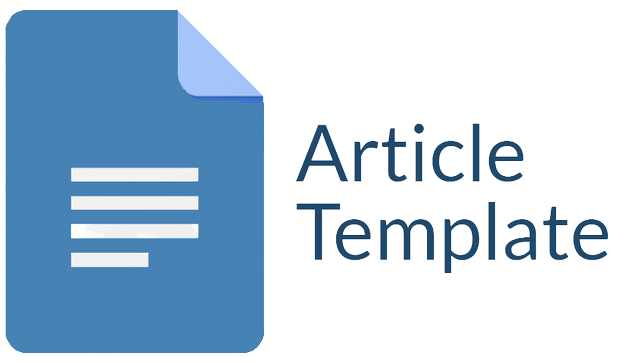PENGEMBANGAN BOT NOTULA DENGAN INTEGRASI MODEL WHISPER PADA PLATFORM GOOGLE MEET
Abstract
Keterbatasan waktu dan tingkat kesalahan manual sering kali mengakibatkan ketidakakuratan dan ketidakefisienan dalam pencatatan notula rapat secara daring. Penelitian ini mengembangkan bot notula otomatis untuk Google Meet menggunakan teknologi Puppeteer dan Whisper. Pengguna hanya perlu memberikan url rapat Google Meet, lalu bot secara otomatis bergabung dalam rapat, merekam audio, dan mentranskripsikan menjadi teks. Mengintegrasikan Whisper AI untuk transkripsi dan teknik diarization tambahan, bot ini dapat mengidentifikasi berbagai pembicara dengan akurat. Dikembangkan dengan metodologi prototyping untuk perbaikan berkelanjutan, sistem ini terdiri dari dua service terpisah untuk skalabilitas. Pengujian awal menunjukkan hasil yang menjanjikan, mengindikasikan potensi bot untuk memberikan transkripsi berkualitas tinggi dalam berbagai kondisi. Secara signifikan, penggunaan bot ini dapat meningkatkan otomatisasi dokumentasi rapat, mengurangi kesalahan manusia, dan meningkatkan produktivitas.
Downloads
References
Aminudin, Nuryasin, I., Wicaksono, G., Chandranegara, D., Thoifah, I., Rizky, W., Ferdiansyah, D., Azzahra, K., Lathifah, F., & Aulyah, K. (2024). Pengolahan Korpus Dataset Audio Bacaan AlQur’an Menggunakan Metode Wav2Vec 2.0. https://doi.org/http://dx.doi.org/10.26418/jp.v10i1
Amorese, T., Greco, C., Cuciniello, M., Milo, R., Sheveleva, O., & Glackin, N. (2023). Automatic speech recognition (ASR) with Whisper: Testing Performances in Different Languages. http://ceur-ws.org
Ćatović, A., Buzađija, N., & Lemes, S. (2022). Microservice development using RabbitMQ message broker. Science, Engineering and Technology, 2(1), 30–37. https://doi.org/10.54327/set2022/v2.i1.19
Fitri, R., Hastuti, I., & Negeri Banjarmasin, P. (2019). Analisis Rekayasa Kebutuhan Perangkat Lunak Menggunakan Smart Requirement Dalam Membangun Sistem Informasi Lomba Karya Tulis Ilmiah Politeknik Negeri Banjarmasin.
Google Cloud Docs. (n.d.). Use public access prevention | Cloud Storage | Google Cloud. Retrieved June 13, 2024, from https://cloud.google.com/storage/docs/using-public-access-prevention?hl=en
Manuel, M., Menon, A. S., Kallivayalil, A., Isaac, S., & Professor, L. K. S. (2022). Automated Generation of Meeting Minutes Using Deep Learning Techniques. International Journal of Computing and Digital Systems, 12(1), 109–120. https://doi.org/10.12785/ijcds/120110
Morris, A. C., Maier, V., & Green, P. (2004). From WER and RIL to MER and WIL: Improved evaluation measures for connected speech recognition. 8th International Conference on Spoken Language Processing, ICSLP 2004, 2765–2768. https://doi.org/10.21437/interspeech.2004-668
Ningsih, A. A., Rambe, R. S., Munthe, Y. N., Sialalahi, P. R., William, J., Ps, I. V, Estate, M., Percut, K., Tuan, S., & Serdang, K. D. (2023). Pendekatan Lean Startup Pada Desain Produk Dan Teknik Minimum Viable Product Dalam Menyikapi Skeptisisme Pada Iklim Bisnis (Vol. 2, Issue 1).
Nur, S., Waita, R., & Asa, B. J. (2023). Rancang Bangun Sistem Informasi Desa Fudima Dengan Menggunakan Metode Prototype Di Desa Fudima. EDUSAINTEK: Jurnal Pendidikan, Sains Dan Teknologi, 10(3), 804–815. https://doi.org/10.47668/edusaintek.v10i3.862
Nurkholis, I., & Yunial, A. H. (2023). Automation Testing Tool Dalam Pengujian Website Sistem Informasi Pembayaran Iuran Dan LKS Di MTS Al-Ittihad Menggunakan Puppeteer. LOGIC : Jurnal Ilmu Komputer Dan Pendidikan, 2(1), 101–108. https://doi.org/10.4230/OASICS.ICPEC.2022.10
Park, T. J., Kanda, N., Dimitriadis, D., Han, K. J., Watanabe, S., & Narayanan, S. (2022). A review of speaker diarization: Recent advances with deep learning. Computer Speech & Language, 72, 101317. https://doi.org/10.1016/J.CSL.2021.101317
Santoso, H., & Fakhriza, M. (2018). Perancangan Aplikasi Keamanan File Audio Format WAV (WAVEFORM) Menggunakan Algoritma RSA. In ALGORITMA: Jurnal Ilmu Komputer dan Informatika.
srivastava, pranjal. (2021). Node.js Puppeteer - GeeksforGeeks. https://www.geeksforgeeks.org/node-js-puppeteer/
Wang, M. Y., & Purushotam, G. N. (2023). Using Deep Learning and Augmented Reality to Improve Accessibility: Inclusive Conversations Using Diarization, Captions, and Visualization. 2023 ASEE Annual Conference & Exposition. https://peer.asee.org/44572
Wibawa, S. (2023). Analisis Chatbot Otomatisasi Tugas Administratif dan Manajemen Dalam Lingkungan Digital Dengan Menggunakan Python. In Sains Teknik Elektro (Vol. 4, Issue 1). http://jurnal.bsi.ac.id/index.php/insantek
Copyright (c) 2024 Muhammad Ihsan Syafiul Umam, Moh Idris

This work is licensed under a Creative Commons Attribution-ShareAlike 4.0 International License.
Jurnal allows anyone to compose, correct, and do derivative works, even for commercial purposes, as long as they credit for the original work. This license is the freest. It is recommended for maximum distribution and use of licensed material.
The submitted paper is assumed not to contain any proprietary materials that are not protected by patent rights or patent applications; The responsibility for technical content and protection of proprietary materials rests with the authors and their organizations and not the responsibility of journal or its editorial staff. The primary (first/appropriate) author is responsible for ensuring that the article has been viewed and approved by all other authors. The author's responsibility is to obtain all necessary copyright waivers to use any copyrighted material in the manuscript before submission.
Jurnal Pendidikan, Sains dan Teknologi allows the author(s) to hold the copyright without restrictions and allow the author(s) to retain publishing rights without restrictions. Jurnal Pendidikan, Sains dan Teknologi CC-BY-SA or an equivalent license as the optimal license for the publication, distribution, use, and reuse of scholarly work. Jurnal Pendidikan, Sains dan Teknologi allows the author(s) to hold the copyright without restrictions and allow the author(s) to retain publishing rights without restrictions. Jurnal Pendidikan, Sains dan Teknologi CC-BY-SA or an equivalent license as the optimal license for the publication, distribution, use, and reuse of scholarly work.
In developing strategy and setting priorities Jurnal Pendidikan, Sains dan Teknologi recognize that free access is better than priced access, libre access is better than free access, and libre under CC-BY-SA or the equivalent is better than libre under more restrictive open licenses. We should achieve what we can when we can. We should not delay achieving free in order to achieve libre, and we should not stop with free when we can achieve libre.
Jurnal Pendidikan, Sains dan Teknologi is licensed under a Creative Commons Attribution-ShareAlike 4.0 International License.
You are free to:
- Share a copy and redistribute the material in any medium or format
- Adapt a remix, transform, and build upon the material for any purpose, even commercially.
- The licensor cannot revoke these freedoms as long as you follow the license terms.






